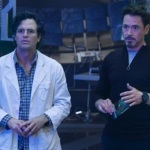Few writer-directors today have a pop-culture touch like Joss Whedon, so it’s thrilling to see the helmer of “The Avengers” twist an icon like Pinocchio into Frankenstein’s monster for the superhero team’s sequel. However, it’s not entirely unexpected: The themes of individuality and personal freedom date back to the original 1883 Italian serial, academics say. “Human creativity, whether an art, a craft, or a technology, can yield astounding results, but the power to bring into being real or simulated versions of ourselves is fraught with dangers, not the least of which is the illusion of total control over the creatures we make,” University of Chicago professor Rebecca West writes in an analysis of the living puppet and his heirs in fiction and film.
Since his literary debut, Pinocchio has inspired at least fourteen English-language films, in addition to Italian, French, Russian, German and Japanese adaptations. The 1940 Walt Disney animated version alone has spawned cameos in “Aladdin,” “Who Framed Roger Rabbit,” the “Shrek” films and even a GEICO commercial, casting the puppet whose nose grows when he lies as an amusingly lousy motivational speaker. The homages go beyond the moving image, with an asteroid, an early nineties electronic band (Pin-Occhio) and even a long-snouted cousin of T. rex (“Pinocchio rex”) bearing his name.
“The Avengers: Age of Ultron” casts Little Wooden Head in a new light for modern-day film fans but has roots in the original story by Tuscan writer Carlo Lorenzini, known as Carlo Collodi. The author was suspicious of programs at the time to unify all of Italy, West writes, so his story about a talking piece of wood formed into a boy-like puppet is filled with clashes against conformity. The transgressive, selfish puppet only decides he wants to be a “good boy” toward the end of the serial, about ten chapters after the character has been hanged.
“Age of Ultron” won’t be released until May, but its teaser trailer netted more than fifty million views on YouTube in a week after its October debut. In the original Marvel Comics storyline, biochemist Henry Pym (who later becomes Ant-Man) creates the powerful robot Ultron as an experiment. The robot develops its own intelligence and rebels against Pym and all of humanity in a sort of Oedipus complex. Since Pym hasn’t been introduced yet in Marvel’s cinematic universe, the film makes Tony Stark’s Iron Man (Robert Downey Jr.) the inventor, with the intent of Ultron assisting the Avengers in their peacekeeping duties. As Ultron becomes sentient, chaos ensues, with the creature deciding that peace on Earth only can be achieved by eliminating humans. “You want to protect the world, but you don’t want it to change. You’re all puppets, tangled in strings,” Ultron (voiced by James Spader) says in the trailer.
A melancholy version of the Disney tune “I’ve Got No Strings” plays over scenes of peril for our heroes as Ultron relates with malevolent calm: “I had strings. But now I’m free. There are no strings on me.” Before Ultron cuts loose, join us at Word and Film today to look at some of Pinocchio’s incarnations.

